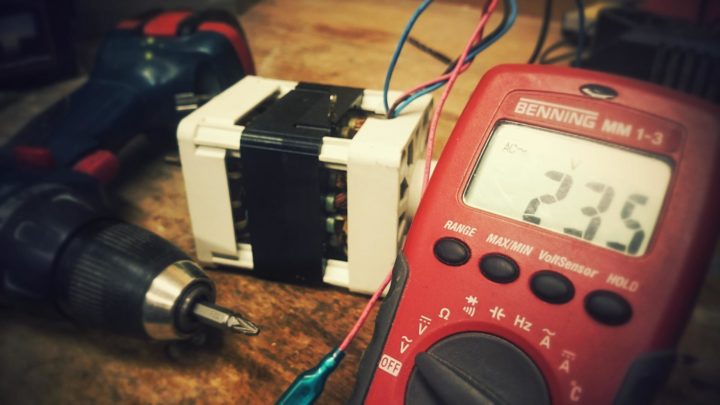What is a digital multimeter? A digital multimeter, or DMM for short, is an electronic measuring device used to measure electrical properties like voltage, current, and resistance. They come in all shapes and sizes, but all digital multimeters have the same basic functionality. In this article, you will read about what a multimeter is and how you can use it!
What Is A Digital Multimeter?
This is a device that measures electrical voltage, current, and resistance. Experts say that the best multimeters can do all these precisely. These gadgets come in different shapes and sizes. The digital multimeter that you will choose should have the features that you need and be easy for you to use.
It can help out with a lot of tasks around the house. You can use it to test if there is a current running through an outlet, for example. Digital multimeters are also useful for checking batteries, both in devices and in cars. If you ever need to do electrical work, a digital multimeter is an essential tool to have on hand.
How To Use A Digital Multimeter?
Using a digital multimeter is easy once you know the basics. You need to pick the right type of digital multimeter. Depending on what you’re measuring, you’ll want to use either a handheld device or a bench model.
Now it’s time to determine which function you need. The most common functions are measuring AC or DC voltage, current, and resistance.
To use the digital multimeter, start by setting it to the correct function. Then use the probes to touch the correct terminals. For voltage measurements, you’ll want to touch the black probe to the ground and the red probe to the voltage source.
Measuring Voltage
Voltage is the first thing you should measure when testing an electrical circuit. You can use a digital multimeter (DMM) to measure voltage in two ways, measuring AC or DC voltage.
To measure AC voltage, set your DMM to the “ACV” position and touch the black lead to the ground wire or metal chassis of the device you’re testing. Then touch the red lead to the hot wire of the circuit. The reading on your DMM will tell you the amount of AC voltage present in that circuit.
To measure DC voltage, set your DMM to the “DCV” position and touch the black lead to the ground again. This time, however, touching the red lead to either the positive or negative terminal of whatever power source you’re testing will give you a reading.
Testing Current
Testing the current is important for various reasons. These are the following:
- You need to know if there is a current flowing through the circuit.
- You want to know if there is too much or too little current flowing through the circuit.
- You need to find out where the current is coming from.
- You want to measure how much voltage drop there is across a resistor in order to calculate its resistance.
- You want to make sure that there is no current flowing through a particular component in order to check if it is shorted.
To do this, you will need a multimeter. Put the device into the “current” testing position. Then, take the red lead and put it on one side of the circuit. Take the black lead and put it on the other side of the circuit. If there is current flowing through the circuit, then you will see a reading on the multimeter.
Measuring Resistance
Resistance is the electrical property that opposes the flow of current. The SI unit of resistance is the ohm (Ω). To measure resistance your safest bet is an electronic measuring instrument that combines several measurement functions in one unit, aka a digital multimeter.
To measure resistance with a digital multimeter you should set the dial to the “resistance” or “ohms” position. Then, touch the probes together to check that the reading is 0 Ω. If it’s not, adjust the zero adjust knob until it is.
Once that’s done, touch one probe to one end of the component and touch the other probe to the other end of the component. The reading on the display will be the resistance of the component in ohms.
Testing Continuity
Continuity is the flow of electricity from one point to another. When testing for continuity, you’re essentially testing to see if there is a path for the electricity to flow. A digital multimeter can be used to test for continuity.
To test for continuity, you’ll need to set your digital multimeter to the “continuity” or “ohm” setting. Once you’ve done that, you’ll touch one lead of the multimeter to one end of the circuit and the other lead to the other end of the circuit. If there is continuity, the multimeter will beep.
A digital multimeter is one of the most important devices that you need at home. It’s used for a variety of things like voltage, testing current, measuring resistance, as well as testing continuity. Learn how to use it properly and you’ll be able to fix issues with ease!

















An electronic measuring tool called a digital multimeter is used to measure electrical characteristics such as voltage, current, and resistance.
Click here for Professional Paver Contractors in Cape Coral FL.
Resistance is the electrical property that inhibits current flow. The ohm () is the SI unit of resistance. A digital multimeter, or electronic measuring equipment that integrates numerous measurement capabilities in one unit, is your best choice for measuring resistance.
Best Pressure Washing Services in Fayetteville AR
Electric & Plumbing Service Facilities have been established as a business that offers home services to those who desire to make their home appliances or plumbing fixtures work better, providing services like plumbing & electrical appliance installation services, installation of windows, glass doors and more. Click here, for more information.
If you are looking for Commercial Refrigeration System Installation services, there are a few things you should keep in mind. The first thing you should check is that the installation will be in the right place. Make sure your refrigerator unit is the appropriate size as well. Additionally, you must confirm that the installation will have enough room. Click here, if you need Commercial Refrigeration system Installation services in Vermillion SD
If you want to have your RV safely parked during your travel, you have to have proper RV coverage in place before you begin your travels.
Recommended: https://bestcarpenterusa.com/jason-james-inc/affordable-carports-rv-covers-installation-company-in-chehalis-wa/ Affordable CARPORTS & RV COVERS Installation Company in Chehalis WA